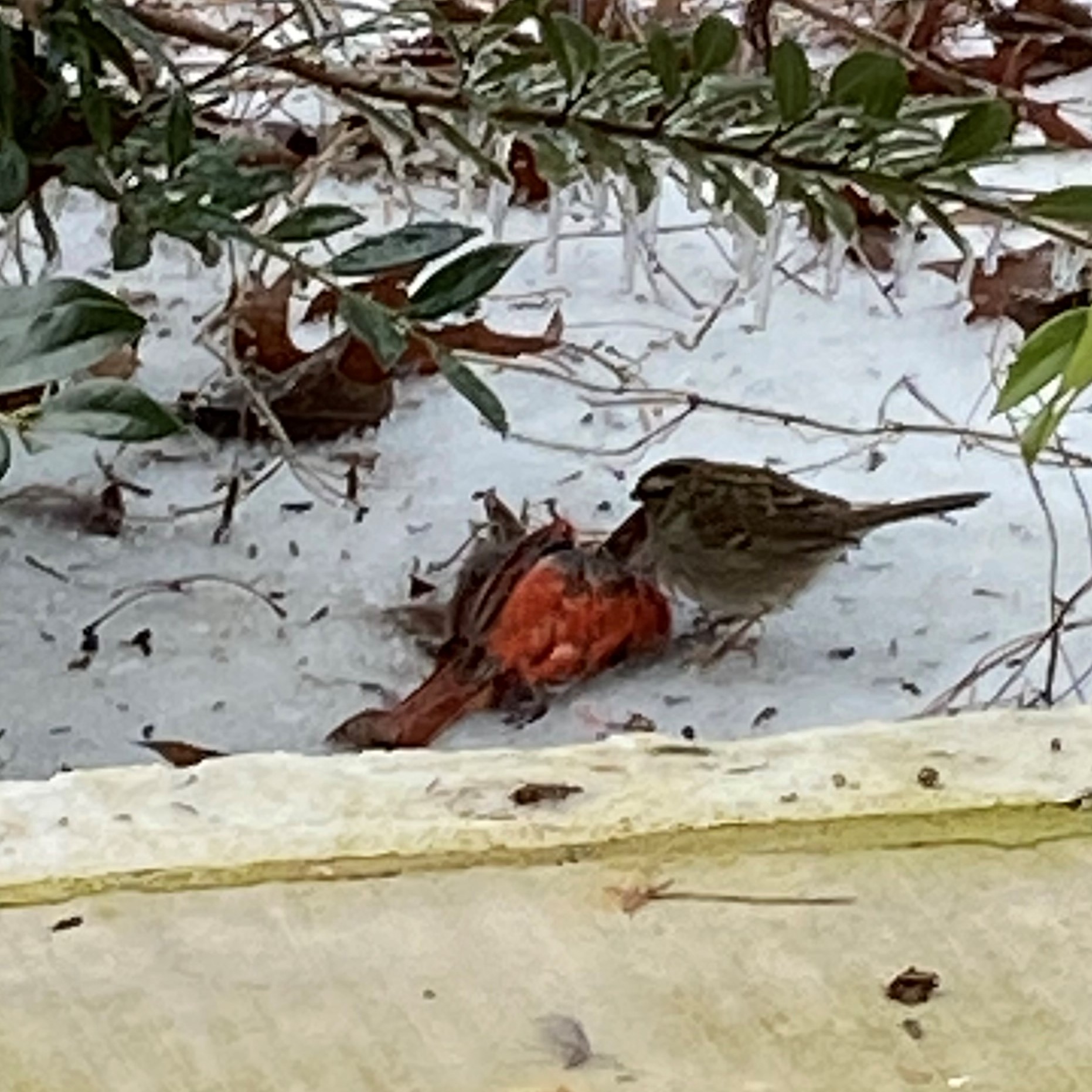Offering suet cakes or homemade suet to backyard birds is a great way to help them stay warm in winter. Even our common seed-eating birds will readily eat suet when the temperature falls. That is because the basic ingredient in these recipes is some form of fat that is readily digested and used to fuel their metabolism. But what do most of us know about what suet is and where it comes from naturally?
My first encounter and knowledge of what suet is stems from my childhood when I helped haul off the tub of suet that we took home from the annual family “boucherie” – the slaughter of pigs at my uncle’s farm. As the old folks would say, the only thing that got away was the squeal. Every bit of those animals was used in some way, including the pig skins that were fried up in a large cauldron. The congealed fat, or suet, left behind served many purposes, from grease for cooking to the curing of iron pots and pans.
So, suet is fat, and all warm-blooded animals have layers of it in their bodies, most commonly just below the skin. It is a ready supply of fuel for keeping warm and for fueling long flights when birds migrate. And when warm-blooded animals die in winter, that fat becomes a source of fuel for the living animals trying to keep warm – including many species of birds.
So, it was that Laura Leverette recently shared a photo (on social media) of what appeared to be a White-throated Sparrow feeding on a dead Northern Cardinal. Did the sparrow suddenly become a carnivore? Was it that cold and hungry? No and yes are the answers, but part of the second answer likely involves the suet the sparrow was gleaning from the unfortunate dead bird. This is the natural form of suet, and it can come from any dead animal in winter.
Although I have not been able to retrieve the reference, I recalled a story about just how many songbirds visit a dead animal carcass in winter. The story published in Bird Watcher’s Digest was by a birder living in one of the Dakotas, who had observed common backyard birds feeding on a dead mammal of some sort. To fuel his curiosity, he sat back and recorded over 50 species of birds that visited the carcass, gleaning both fat and tissue. When it is cold and your normal food is covered in snow, you eat what you find!
So, Laura’s observation illustrates the natural source of suet, which can mean life or death for many species of wintering birds. Nothing goes to waste in nature, and vultures are not the only birds that will eat dead animals. So, if you really want to offer your birds real suet, put out the fatty trimmings or drippings from your steak or pork roast and watch them ignore the store-bought suet cake and fight over the good stuff. Roadkill works well too, but…
Hope to see you in our great outdoors!
(Photo courtesy of Laura Leverette)




